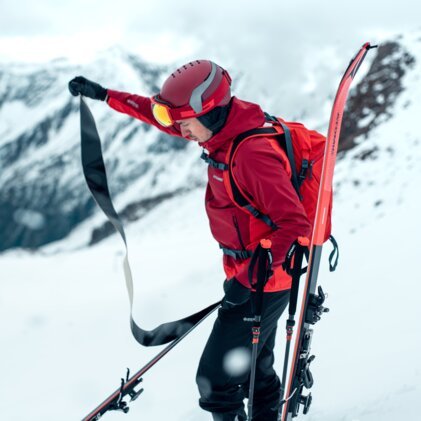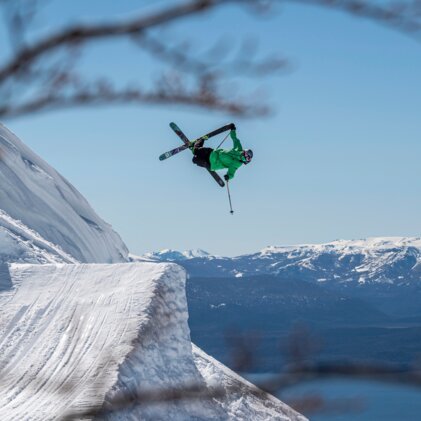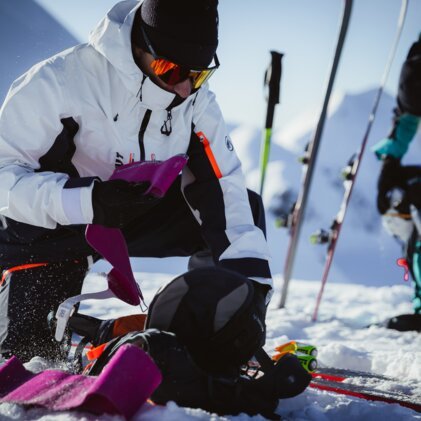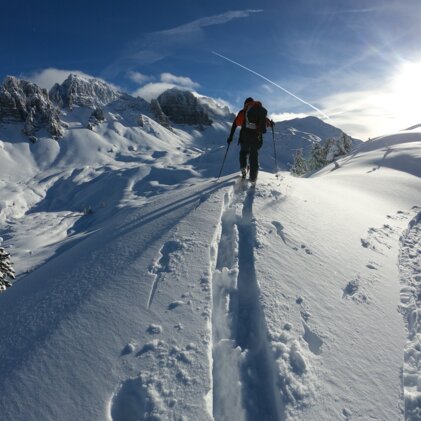Find the right touring binding at INTERSPORT Rent
*Advertisement
Frame bindings are heavier compared to frameless versions and are particularly suitable for downhill-oriented freeriders. Ski mountaineers whose focus is on the ascent choose pin bindings for maximum performance.
Hardly any other component plays such a key role in ski touring as the touring binding, as it’s the connection point between your ski and boot that is crucial for this sport. To get the most out of your next tour, it's worth taking a closer look at the different types of bindings available on the market.
Once you have decided on which ones to get, the best place to rent touring skis including the right bindings is at INTERSPORT Rent. At more than 800 locations worldwide, you can choose from a wide range of touring bindings from renowned manufacturers. And now, let’s dive right in!
Components of a touring binding
Touring bindings are essentially similar in design to all-mountain bindings. They consist of a toe and a heel piece that hold your ski boot in place.
As soon as the terrain becomes steeper, the climbing aids or heel raisers of the binding can be activated. Depending on the system, they are small pads or U-shaped levers. They lift your heel and thus change the angle between your foot and the touring ski. During a ski tour, you can choose between three levels, depending on the angle of the slope and the system you chose. Changes can be made with the help of a touring ski pole.
Expert tip: Touring poles with sturdy baskets will make it easier for you to activate the heel raisers. At INTERSPORT Rent, you can take your pick between various models.
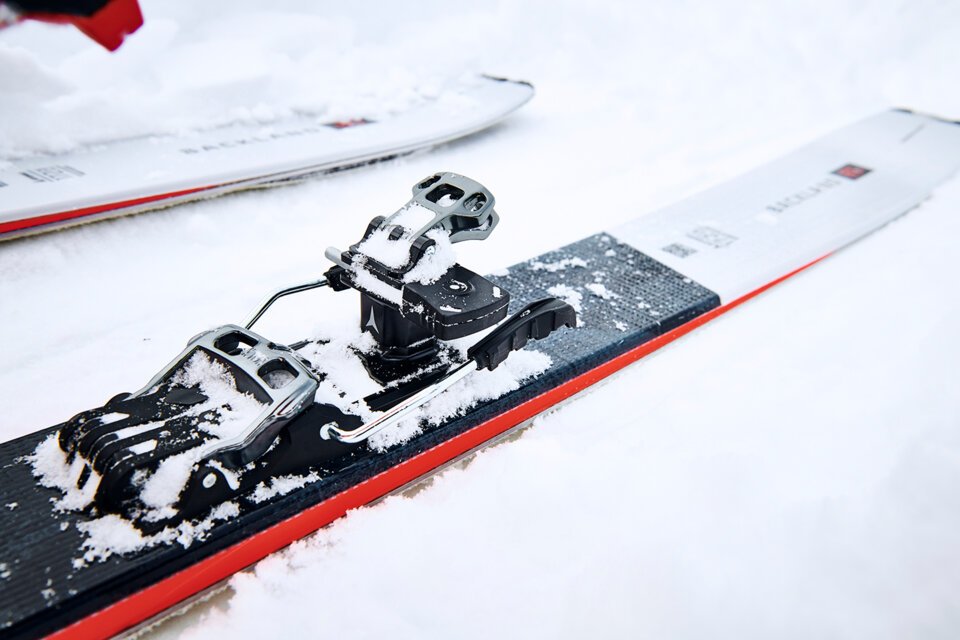
The different types of touring bindings
Downhill comfort versus uphill performance: Depending on what you would like to focus on during your ski tour, you might need a different type of touring binding. You can choose between two main systems. In practice, however, some hybrid models combine the advantages of both options.
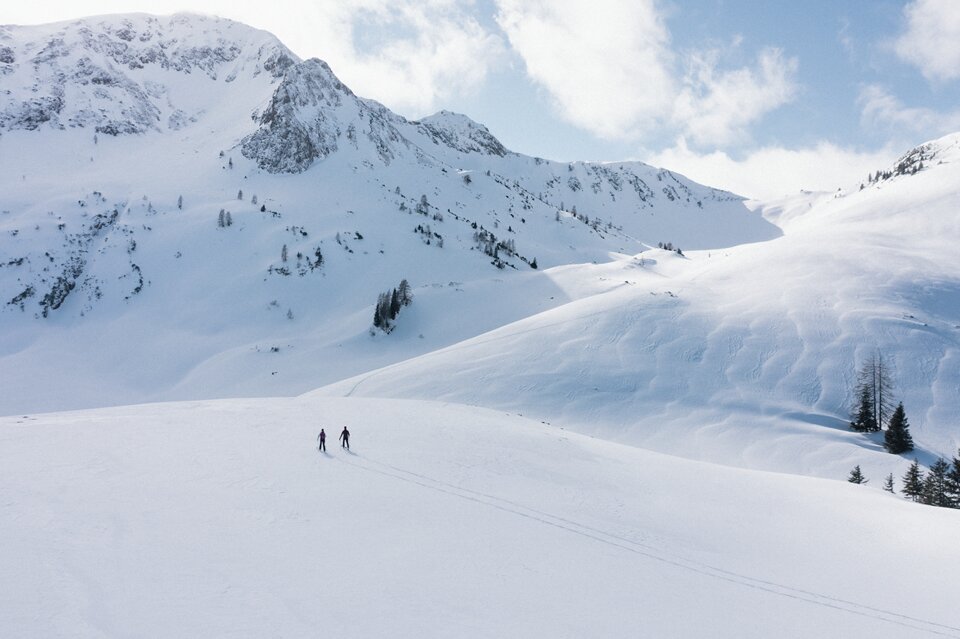
Pintech bindings
Lots of functions with as little weight as possible: That’s what best describes the uphill-oriented pin binding or pintech binding. The toe piece and heel piece are two separate parts and mounted independently of each other onto the touring ski. To get started, you need to get into the toe piece. This requires some effort and precision. Only when the metal spikes (also called pins) are precisely locked into the boot, you’ll get a secure connection. Locking your boot in becomes a little tricky when there is snow or ice in the binding. Switching between "hike" and "ski" modes is quick and easy.
The distinct advantage of pin bindings is their low weight. In the frame version, the entire binding has to be lifted with every step. With pin bindings, on the other hand, the heel is free to move and only the boot gets lifted. In steep terrain, heel raisers make the uphill easier.
Before skiing down the mountain, the heel raises have to be inactivated, and the lever on the toe piece gets switched to "ski" mode. After clicking your boot into the heel piece, which is similar to that of an alpine binding, you’re all set to head downhill.
Frame bindings
In frame bindings, the toe and heel pieces are connected. When ascending, the bar connecting the two jaws gets released via a lever. This changes the position of the binding, shifts the centre of gravity, and makes it easier for you to climb with them.
Frame bindings work the same way as frameless bindings: The toe and heel are anchored in the binding. However, when ascending, the heel including the binding lifts up, which requires significantly more strength and stamina because you’re lifting the entire weight of the binding with every step. Especially on long and steep climbs, users of frame bindings thus need to have a good level of fitness.
For the descent, the lever gets switched back to "ski” mode. Before you step back into the binding with your ski boot, it’s important that the frame binding is cleared of any snow and ice. Only then will the guide rail on the ski connect properly with the rail under the sole of the boot. After that, nothing stands in the way of an adventurous descent in powder snow.
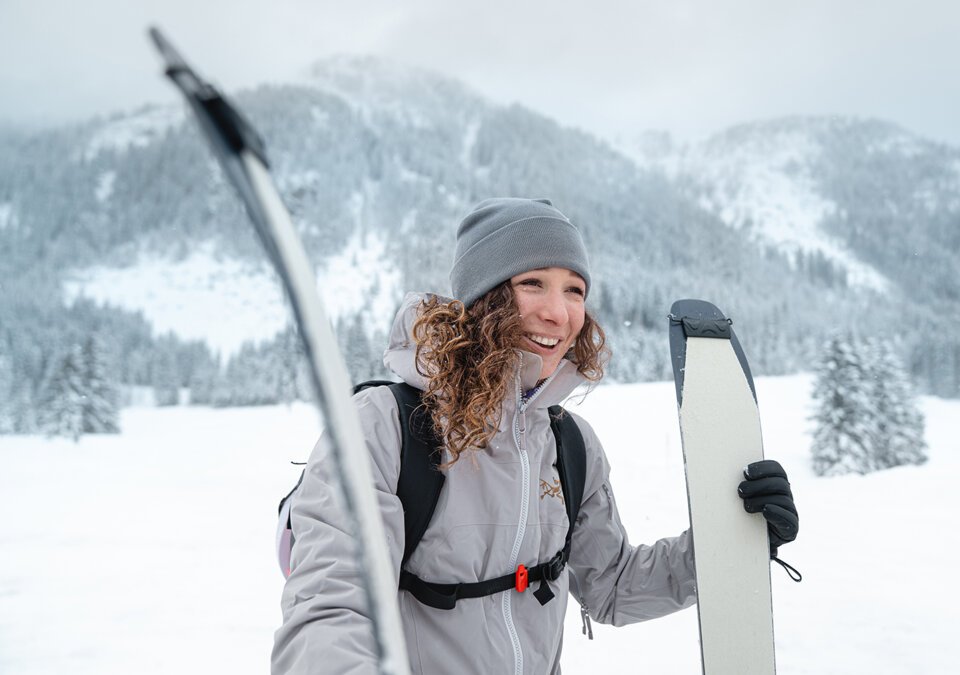
It's a match: the right touring binding for every type of skier
Now that we’ve established the differences between pin and frame bindings – the question is: Which one is the better choice for you? First, you should define what type of touring athlete you are: Do you feel most comfortable in difficult terrain and on steep slopes, or are you all about a fantastic downhill performance? The following three tourer descriptions will help you assess which touring ski binding is right for you.
Adventurous freetourer
Do you feel most comfortable in the backcountry, and the real fun starts at high speeds? Descents can't be steep enough for you, and the slopes can’t be challenging enough? Then you’re definitely a freetourer. While weight plays a minor role, impact resistance, reliable safety release, and high flexibility are most important to you.
Touring bindings that are similar to alpine and freeride bindings are the right choice for this type of use. That’s why freetourers often resort to hybrid versions that combine the advantages of a frame and a pintech binding.
Leisure tourer
As a leisure tourer, you prefer routes away from the crowds. How long your tour takes you plays only a secondary role for you. Instead, you attach great importance to optimal snow conditions, coupled with a first-rate downhill experience.
The optimal touring ski bindings for this type of tourer are models with high walking comfort and low weight. In addition, getting into the binding needs to be easy, and the same goes for the use of the heel raisers.
Ambitious ski mountaineer
You’d describe yourself as a ski mountaineer, and your to-do list includes high-alpine tours. Every ounce of weight you can save matters to you, and you are more than willing to sacrifice a bit of comfort for that.
Touring bindings for high-alpine terrain often make do without a second heel raiser or a flat walk mode. Basically, the binding should be as light as possible and only offer as much comfort as absolutely necessary.
Optimal testing conditions at INTERSPORT Rent
You now know the components of a touring binding, and you know the two basic options you can choose from. Maybe you have already found out which type of ski tourer you are and which binding you are looking for? If not, that's no problem either. At INTERSPORT Rent, you will get one-to-one advice from true ski touring experts: our RENTertainers.











